When you’re deciding what snorkeling gear to buy, one of the considerations you need to make is what color(s) you prefer. Color affects how good you look, and we all want to look good. However, color also has a practical benefit of making you more visible. This is especially important so that your snorkeling buddy and boats can spot you. Snorkeling instructors should also be highly visible to their students.
Which colors are the best to wear while snorkeling, and which colors should you avoid? Generally, wear bright colors and avoid colors that are hard to see (e.g. blue can blend in with the water, black is hard to see when it gets dark, etc). Beginners should stick to bright colors. If they ever get separated or need to be rescued, they will be easier to spot. This also reduces the chances of boat collisions. Additionally, since snorkelers spend most of their time by the surface, they do not have to worry about the color loss that happens at deep depths.
With that said, a side effect of being highly visible to others is that it might attract the attention of sharks. Whether or not this is a good thing depends on whether you view sharks as bloodthirsty killing machines or majestic creatures of the sea. Statistically speaking, shark attacks are so rare that you shouldn’t worry about it. Thus, you should still just stick with wearing bright colors.
In this article, we’ll discuss which colors you should wear and which colors to avoid for the best snorkeling experience.
Common colors you’ll find on snorkeling gear
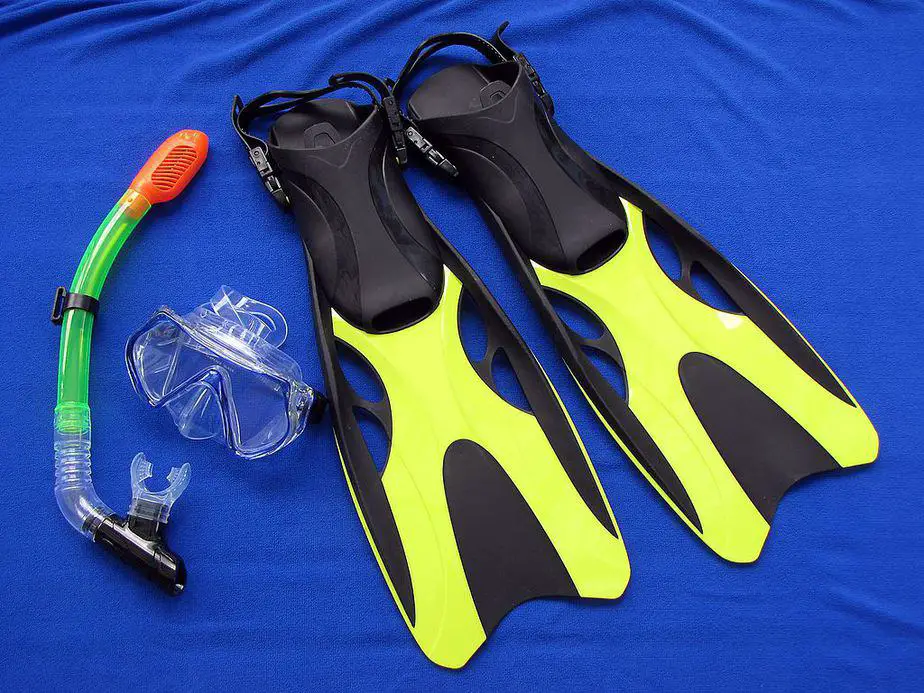
You’ll often find that you don’t have much choice when it comes to the color of your snorkeling gear. By default, most snorkeling gear is already very bright – it’s not unusual to see buoyancy aids that are neon yellow or bright orange.
Depending on the water temperature, you might decide to wear a thin snorkeling wetsuit for some extra insulation. When it comes to wetsuit colors, your choices are likely: black, black, or black. We mentioned that dark colors don’t stand out as much, which can make you harder to see. However, you can wear other equipment that have bright colors over the wetsuit, such as the snorkel vest or a bright bandana.
If you’re snorkeling somewhere that’s nice and warm, you might think that you don’t need to wear an exposure suit. However, then you’d be leaving your skin vulnerable to sunburns. You might want to at least wear a rashguard. When it comes to rashguards, there are more color choices compared to wetsuits.
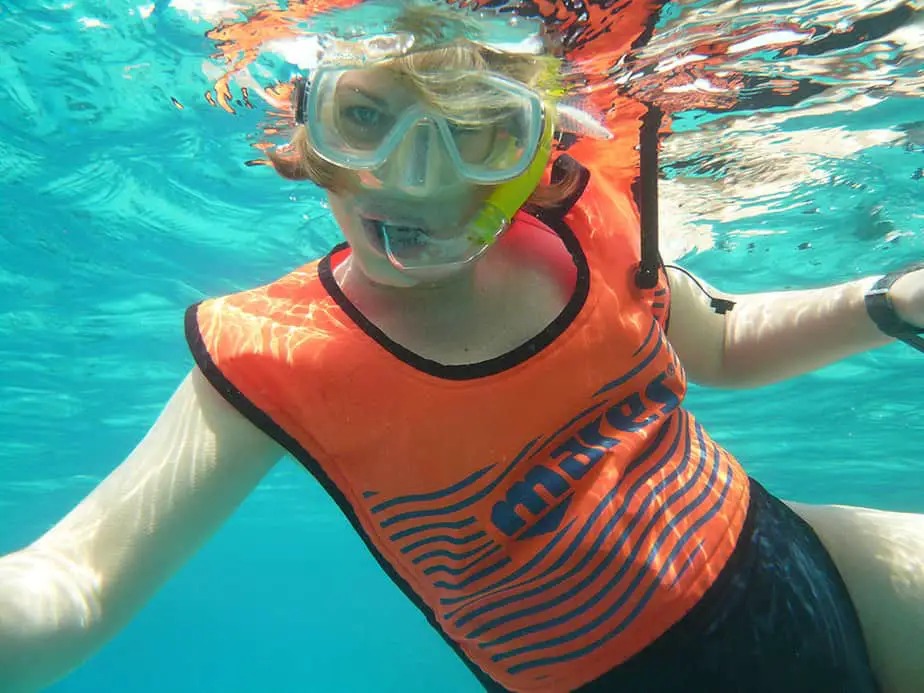
Not only do rashguards have great UV protection, but the more you cover up your body, the less sunscreen you need to use. Having any kind of skin protection also means you have a layer of defense against superficial injuries. Covering yourself up can help you avoid extreme discomfort later.
The colors of equipment or clothing that stands out the most are the ones that contrast with its surroundings the most. This typically means yellow or orange are the colors that stand out the most against the blue environment.
Typically, the color choices available already are the ones with the most contrast. So your choices are between one bright color and another. Just pick the bright color that you like out of all the other bright colors; you can’t really go wrong.
What colors are sub-optimal for snorkeling?
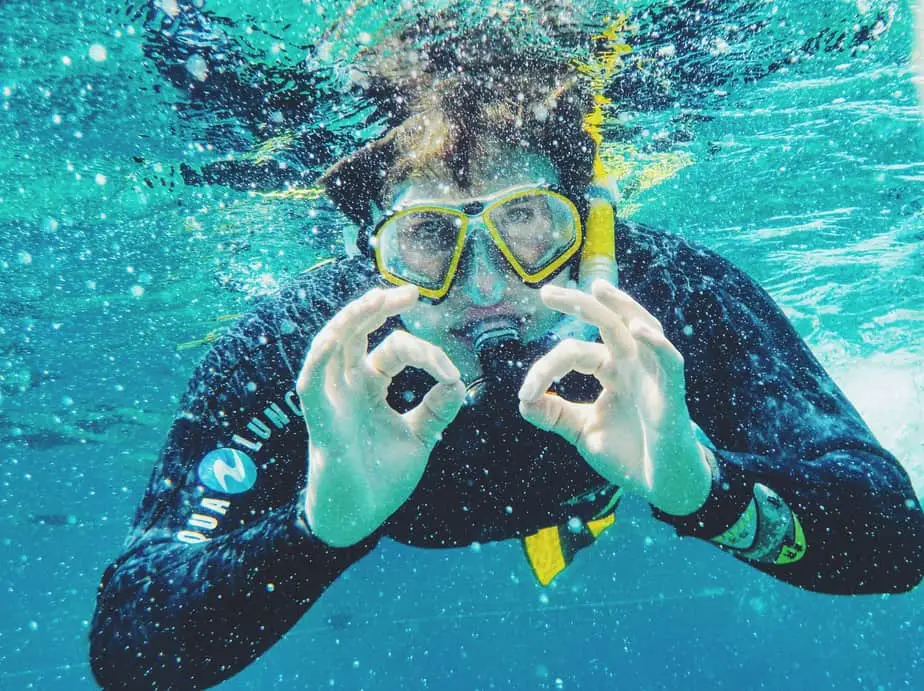
If you’re not sure what to wear while snorkeling, why don’t we focus on what not to wear instead.
There aren’t any “bad” colors per se, the color of your snorkeling gear often has very little impact on your snorkeling experience. Even if you have not given any thought to how you look, you’ll probably have a similar snorkeling experience as someone decked out in colorful gear.
Getting an answer to which colors are the best/worst for snorkeling gets even more confusing when you consider that there are pros and cons for bright/dark gear. Specifically, if you’re snorkeling in a group, perhaps having a variety of colors is good for immediately telling one snorkeler from another. On the other hand, if everybody is extremely bright and there’s one person in all black, arguably they stand out the most.
In general, bright colors make you more visible which is mostly a benefit. Thus, the implication is that dark colors are harder to see, therefore making you less visible. But is darker gear really much worse?
We must also factor in how marine life perceives color. Scientists have confirmed that some marine life can see color, notably sharks. They cannot say for sure if all marine life can see color because there are simply too many to test (and the majority of the ocean’s depths are unexplored). Will having brighter colors make fish more likely to notice you? Will they be enticed and approach you, or get scared and swim off?
This all depends on the animal’s temperament and curiosity. However, you should not be worried about the color of your snorkeling gear in the attracting or repelling of sealife, but more with the amount of noise you’re making splashing around. The noise is more likely to drive sealife off than how you look.
Color loss underwater
We are able to perceive colors true to what they are on the surface thanks to the abundance of light that is available. Since we experience unfiltered sunlight everyday, we sometimes take for granted the benefits it provides when it comes to visibility.
When you are underwater, the water can act as an impediment to the sunlight. Specifically, sunlight is absorbed at different rates, and the deeper you go, the more sunlight gets absorbed resulting in a loss of color.
This knowledge is particularly important for underwater photographers that need to consider how much color is lost at the depth they’re taking pictures at so that they can digitally correct it later. They will likely need to use underwater camera lights for the best pictures, otherwise all of their pictures will look very blue.
For us snorkelers, we are barely affected by color loss since our domain is near the surface of the water. Even if we were to duck dive, it’s unlikely we’ll dive deep enough for sufficient color to be lost. Of course, water visibility also plays a major factor.
When you’re snorkeling at the surface but looking at fish and corals more than a few meters away, you might notice that they look darker than you expected. This is because at their depth, by the time the sunlight reflects off of them, some of the brighter colors have already been absorbed.
The only way to see marine life in the same colors as they would appear near the surface is to get close to them and shine a dive torch on them. Since the dive torch is in such close proximity, there isn’t enough distance for the light from the torch to get absorbed, giving you a more true look on their color scheme.
Can sea life notice colors?
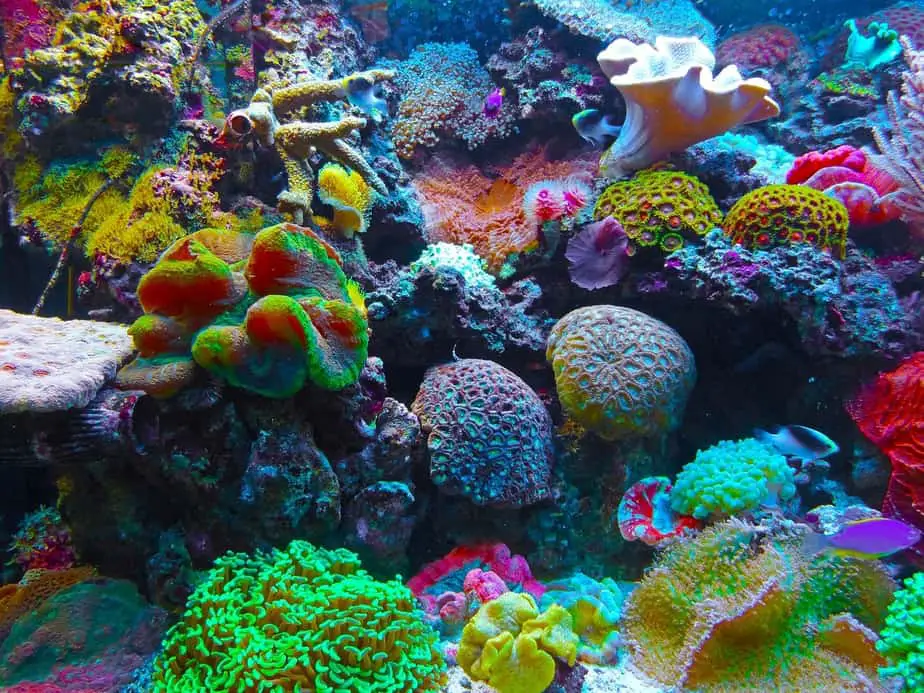
Indeed, they can notice color or at the very least contrast. Spearfishing freedivers who want to stay hidden should wear camouflage suits to conceal their position as they approach fish.
As a snorkeler, it is not much of a concern whether the fish notices your bright colors or not. Fish are already aware of your presence due to the splashing noises you are making. You can still get close enough to them to get a good look, so you aren’t missing out. Remember to keep your hands to yourself and don’t actually try to touch the sealife.
You might notice that some reef fish come in extremely vibrant colors and patterns. We know that in nature, everything serves a purpose, and scientists have two theories as to why fish can come in a variety of colors.
First, it is theorized that bright colors in fish are so that they can camouflage themselves from predators in a colorful reef environment. Conversely, perhaps it is the predator that lies in wait for an unsuspecting fish.
The second theory is that reef fish have distinctive patterns that are recognizable by other fish in the same species and this helps them find a mate.
As for how this affects snorkelers, it means we get to see beautiful, vibrantly colored fish for our enjoyment.
Are sharks attracted to bright colors?

Sharks are able to see contrast particularly well, so if you stand out to humans, you likely stand out to a shark. As we mentioned, many snorkel vests are bright yellow in color. Does it send shivers down your spine to know that shark researchers jokingly call this color “yum-yum yellow”?
Don’t take it to heart. The number of shark attacks in the world is so low each year that you have a much higher chance of getting into an accident on the way to the snorkeling area. Depending on how much of a shark enthusiast you are, the thought of attracting sharks might even be seen as a positive. Imagine getting up close to a shark and getting a picture with it. Or don’t, if that thought is giving you a panic attack.
Should a snorkeler replace all of their brightly colored gear with more drab-colored items? Generally speaking, no, the trade-off is not worth it. Unlike shark attacks, the risk of getting separated from a group is very real and infinitely more serious. You want to have the highest chance of being found and that is only possible when you’re wearing bright colors.
Actually, what’s more likely to attract a shark is if there is some sort of bright light reflecting off of something you’re wearing, such as a dive watch or jewellery. Sharks, being the curious creatures that they are, might want to check out what the shiny thing is at the surface. In a shark’s eyes, the glint might be the reflection of the scales of its next meal. Sharks typically don’t prey on humans, but it will if it thinks you’re a fish.
Parting words
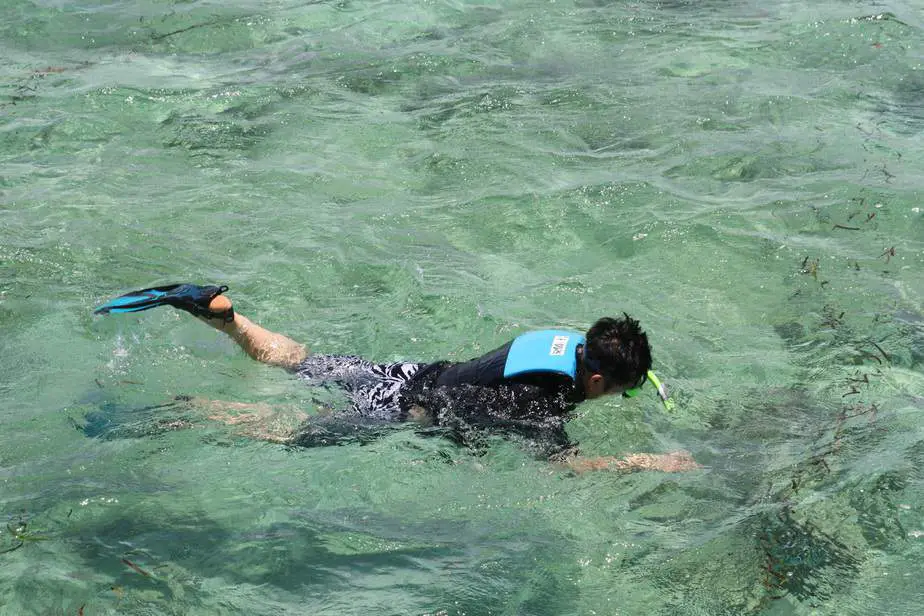
We gave a lot of thought on whether the color of your snorkeling gear matters so that you don’t have to. Our conclusion is, you typically don’t need to give it any thought because the manufacturer likely selected bright colors for their products in the first place.
From a safety point of view, bright colors are the best whether you’re a beginner or a pro. If you get lost, rescuers can spot you more easily if you’re wearing bright colors.
If you’re an instructor or you’re the more experienced snorkeler in your group, wearing bright colors can help you stand out to your students/snorkeling buddy so that they don’t lose you.
Another way to stand out is to wear something distinctive, such as a bandana, so people can immediately recognize you at a glance.
Yes, wearing bright colors makes you stand out to marine life. However, the chances of that leading to a dangerous encounter is so low as to be negligible.
However, what is a legitimate concern is if you are wearing something shiny and reflective. The way the light reflects off it can trick predatory fish into thinking you are a fish that it wants to eat. So don’t wear any jewellery and stick that dive watch under the cuff of your wetsuit/rashie, and you can snorkel in peace.

